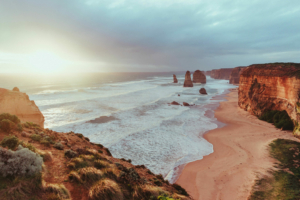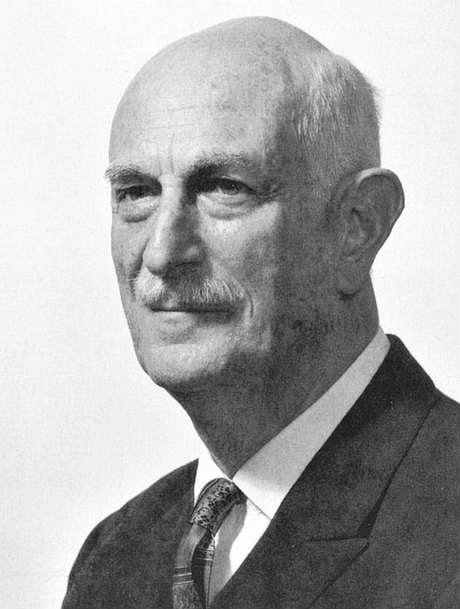Highlighting Australia
- As a proudly Australian initiative, we’re excited to showcase a collection of Australian stories, music, tributes and more.

Join activities, celebrations, study groups, spiritual empowerment and education programs for young people, and more.
Baha’i beliefs address essential spiritual themes for humanity’s collective and individual advancement. Learn more about these and more.


When we think of spiritual giants, we may fall into the trap of picturing them deep in prayer or meditation without a care for the practical world in which they live.
But if we have such a view of them, then it is likely to be far too narrow and therefore inaccurate.
In this regard, have a look at the life of Ugo Giachery, a man born into an aristocratic family in Palermo, Sicily in 1896. Dr. Giachery was deeply spiritual, yes, but also immensely practical.
His life could have been one of waltzing about in elite circles or retreating into the academic world making a career out of his doctorate in chemistry.
However, he chose another path. After becoming attracted to the world-embracing teachings of the Baha’i Faith, he set about implementing them the best he could. World peace was no abstract notion for him. He had been wounded in World War I and so he knew the horrors of global conflict. It was perhaps inevitable that he would find appealing a religion promoting a practical path to peace.
After he married his Swedish-born wife, Angeline, the couple promoted the teachings in the United States and then answered the call in 1947 to introduce the Faith to Italy in its hungry, broken days after the end of the calamitous global conflict that was World War 2. The location also made him able to travel easily to Geneva as a Baha’i representative to assist in the drafting of the Universal Declaration of Human Rights in 1948.
It was in that year that Dr. Giachery’s incredible strength of mind, personality and soul – his practicality and spirituality – were called upon to play a key role in the building of the arcade and superstructure that was to complete the Shrine of the Bab in Haifa that had been built by Abdu’l-Baha some 40 years earlier.
This project was directed by the head of the faith, Shoghi Effendi and called by him “the most sacred enterprise ever undertaken in the history of the Faith”.
Baha’is, justifiably and with due gratitude, now marvel at what happened between 1948 and 1953 – the construction of an exquisite work of spiritual architecture on the ancient spiritual slopes of Mt Carmel in the Holy Land.
Working alone in Italy, in coordination with the Haifa-based brilliant architect of the superstructure, William Sutherland Maxwell, and guided by Shoghi Effendi, Dr. Giachery – then in his early 50s – located the marble and other stone required for the building, found the artisans who could cut it to perfection, and then arranged its transportation by ship after ship to the Holy Land.
With the assistance of his beloved wife when possible, Dr. Giachery also surmounted the huge difficulties of obtaining scarce building materials in a country devastated by the war and still suffering shortages.
It helped in manoeuvring through the labyrinthine bureaucracy to obtain rare export permits, that Dr. Giachery was an elegant and dignified man, with a loving way about him, an eloquent tongue and immense reservoirs of patience and faith. He could point to the practical results of his work – vital jobs for otherwise unemployed Italian artisans, promotion of Italian industry and the country itself.
Dr. Giachery worked solidly at this demanding task for nearly four years before even meeting Shoghi Effendi. When they met in Haifa in March 1952, it had a huge effect on Dr. Giachery, as he later summarised: “I myself have never been alone or unhappy again.”
Once the Shrine was built, he undertook the same service for the magnificent International Archives building on Mt Carmel, and in 1957 he had had the sad yet privileged duty of arranging for the marble for the London resting place of Shoghi Effendi. In the 1970s, Dr. Giachery provided a service for generations to come in his superb work, Shoghi Effendi: Recollections, which contains one of the most loving and detailed word-portraits of a significant religious figure that exists in literature.
In 1951 Dr. Giachery had been elevated to become a Hand of the Cause of God, a high ranking official of the Faith. For the rest of his life he was to devote himself to this role, protecting the unity of the Faith, inspiring its adherents and promoting and explaining its teachings worldwide, including, with others, to a king, Malietoa Tanumafili II, the Head of State of Samoa (1913-2007), who became the first reigning monarch to adopt the Faith.
On Dr. Giachery’s last visit to Samoa in 1989, the King arrived at the airport in his limousine and drove it up to the plane to greet his honoured guest. Dr. Giachery passed away soon after and is buried in Samoa, near the Baha’i Temple.
For those blessed to be able to visit the holy Shrine of the Bab amidst the beautiful terraced gardens of Mount Carmel, they can take the opportunity to visit a place which has special connection with Dr. Giachery. More than six decades ago, Shoghi Effendi addressed his beloved co-worker and said:
Single-handed, you have rendered an historic service to the Cause… This evening when I went to the Shrine, I remembered you and I have come to the decision that we shall have a Giachery door for the Shrine…
The door so named is at the southwest corner of the Shrine, a sacred building whose adornment was contributed to by the loving, persevering and practical efforts of the saintly Ugo Giachery.
"*" indicates required fields

We recognise their continuing connection to land, waters and community. We pay our respects to Aboriginal and Torres Strait Islander people and their cultures; and to elders both past and present.
The views expressed in our content reflect individual perspectives and do not represent authoritative views of the Baha’i Faith.

Visit the site of the
Australian Baha’i Community
and the Baha’i Faith Worldwide
Notifications
Infinite thanks, Michael, for this tribute to a spiritual giant. Personally I can testify first hand to his dedication, perseverance and steadfast love for, and service to, Bahá’u’lláh. Future ages will no doubt reveal more fully the true scope of his services to the betterment of this world.
James Holmlund (July 7, 2014 at 7:16 AM)
I have famiy who are named after Dr Giachery, but never really knew anything of him. It’s a very moving tribute Michael – thank you for putting the time to put it together!
Corinne (July 7, 2014 at 1:01 AM)
Wonderful! I have been long waiting for a biography on Ugo Chiachery, whom I met a number of times and always held in high regard.
Örjan Widegren (August 8, 2014 at 1:32 PM)
Good article, thanks.
Toya Iacovetto (January 1, 2016 at 3:08 PM)